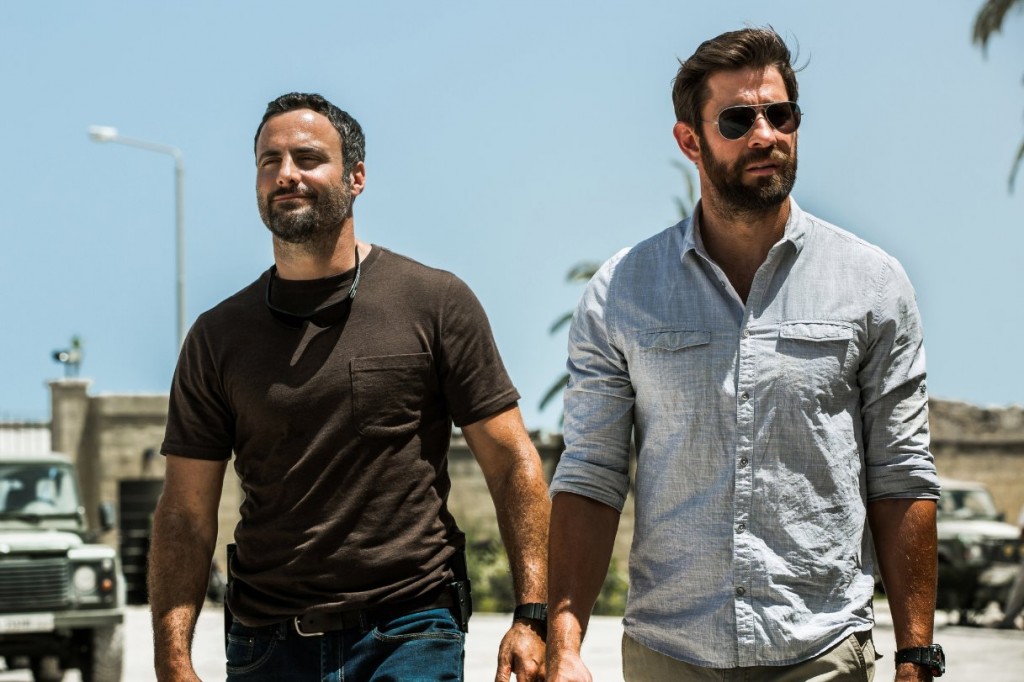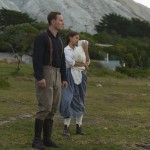Two films out this week, The 33 and 13 Hours: The Secret Soldiers of Benghazi have more in common than their titles, which both contain prime numbers with special significance to Freemasons.
Both films are set in an inhospitable desert and are based on relatively recent, well-known international events: the miraculous rescue in 2010 of 33 miners trapped deep underground for 69 days; and the 2012 attack on the US Consulate and CIA base in Benghazi, Libya, defended by a small team of private security staff. Both are also based on books that were ghost-written for the respective groups of survivors but were never compensated for cosmic failures in health and safety rules.
The major difference between the two films is one of style. Mexican born, Columbia University- educated Director Patrician Riggen’s The 33 is a gentle, clichéd and conventionally made, but nonetheless engrossing Euro-America pudding that does tell the story reasonably dramatically. CGI and Sci-fi action film Director Michael Bay’s testosterone-fuelled, two-hour machine gun fest is, well, another Transformers with only some historical interest.
Some of the credibility lost in The 33 by casting Gabriel Byrne as a Chilean mining engineer, and Juliette Binoche as an empanada peddler and the self-righteous, guilt-ridden sister of alcoholic miner, Dario Segovia (one of the few composite characters), is made up for by the location settings.
Riggen shot the sometimes harrowing underground scenes in real Colombian mines and the family/rescue camp scenes were shot in the spectacular Atacama Desert, close to the site of the actual gold and copper mine disaster. Bay might have liked to have filmed in Libya, perhaps competing with IS in destroying Libyan heritage à la Transformers, Revenge of the Fallen, but he settled for a heavily transformed Morocco and Malta.
Bay and Riggen nonetheless faced the same problem. How can a director follow the stories of an ensemble cast of characters (in Riggen’s case, 33!) who share the same experience so that we care about them? And how can a director maintain the tension in a story whose outcome was broadcast across the globe?
Neither Bay nor Riggen manage to flesh out and differentiate the characters sufficiently so that we care about them very much, but both do a good job creating tension when the outcome is a foregone conclusion.
That being said, it is rather difficult to feel much more than shell-shocked for most of 13 Hours as the gun fire scenes are relentless. In between, the men, in particular, mates Jack Da Silva (John Krasinski) and Tyrone Woods (James Badge Dale), sit around with growing beards and sweaty chests, philosophising. In terms of making lead character Da Silva a real human being, the filmmakers stress how he is torn between his family and the dangerous job which, in a Freudian conundrum, keeps him away from his family.
Bay nonetheless had the easier time of it, as the GRS was reduced to just six men who, like Davey Crockett’s men in the Alamo, defended the outpost against thousands of zombie rebels, to the last. Moreover, audiences might not remember the fate of newly arrived Ambassador Christopher Stephens (Matt Latscher), while even fewer will realise that the not-so-secret CIA compound and Consulate were protected by a small team of Private Military Contractors, called GRS, or the Global Response Staff. It is these unsung heroes –whom we see pumping iron or bumping off attackers like flies, as swarthy and shirtless as Taylor Lautner – who wanted their story told.
 They told it to Mitchell Zuckoff a journalist/professor/author specialising in military-related survival stories. Absent, until the very end, are any American allies in Libya. Completely absent is the point of the view of the Chief of CIA base (David Costabile), portrayed as a weak commander who owes his life to the GRS team that he continually dismisses and undermines.
They told it to Mitchell Zuckoff a journalist/professor/author specialising in military-related survival stories. Absent, until the very end, are any American allies in Libya. Completely absent is the point of the view of the Chief of CIA base (David Costabile), portrayed as a weak commander who owes his life to the GRS team that he continually dismisses and undermines.
In the case of The 33, we can only really keep track of about six of the men although, underground with dirty faces, even that is difficult. We vaguely distinguish Alex Vega (Mario Casas) whose wife is going to have baby and therefore we should care about him more; and Carlos Mamani (Tenoch Huerta) because he is the only non-Chilean miner and object of discriminatory innuendo.
It is far easier to keep track of the Cassandra-like Shift Supervisor Luis Urzua because he is played by Lou Diamond Phillips. Phillips is 53 now, but we still remember him at age 25 playing 17-year-old Ritchie Valens in La Bamba. Yonni Barrios (Oscar Nunez) is easy to remember, too, as he is the particularly looks-challenged stud juggling a wife and mistress who have a cat in the media spotlight of the camp. Finally, we can distinguish Mario Gomez, the eldest miner, who was planning to retire after this last shift, although his role is negligible.
The main character underground is, appropriately, ‘Super’ Mario Sepulveda, played by A-lister Antonio Banderas. Sepulveda was, as you may recall, the unofficial face of the miners and a kind of showman who loved the media attention once the cameras could be sent down into the ‘Refuge’, 200 storeys underground. He was also a natural leader and organiser who managed the food rationing system that enabled the miners to survive long past the 3 days predicted. (In 13 Hours, the men do not have time to eat, but their siege situation lasts hours, not months).
Riggen does a particularly good job portraying the real heroes of the The 33. Newly- appointed Mining Minister Laurence Golborne, played by the handsome Rodrigo Santoro, was a hands-on permanent fixture at the camp, refusing to give up on the men — while our DEFRA minister sunned himself in the Caribbean when floods raged in Yorkshire.
Santoro here is unrecognisable as Xerxes in the film 300, but you might remember him for a bit part in Love, Actually or as Paulo in the TV series, Lost. The other hero of is Jeff Hart (a cameo from James Brolin), the American drilling expert who flies to Chile to lift steel with magnets and doggedly attack the impenetrable rock when all other drillers fail or give up and go home. John Pilger must be busy planning a sequel to The War on Democracy to set the record straight.




